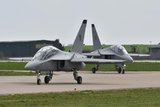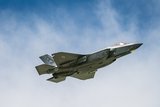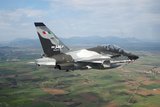Air Warfare: emerging threats, critical care, US Army Aviation and more
Read the latest edition of Air Warfare for free in our app or on your desktop. Register below to be sent the download link and receive future editions direct to your inbox.
COMMENT
As the COVID-19 pandemic wreaks havoc on human lives and the global economy, the defence industry continues to contribute to battling the crisis.
Features include:

RISK ASSESSMENT
As the aerial battlespace evolves, platforms and networks face the prospect of a fresh threat spectrum that goes beyond traditional kinetic weapons and EW effectors.

STAYING SAFE
The ways in which attack helicopters and their associated weapons management systems play a role in contested environments has become a highly topical issue. Shephard looks at all sides of the argument.
Other features include:
CONTROLLED AGGRESSION
As a long-term proponent of dissimilar air combat training, the US military is looking to enhance both its organic capability and increase the scope of contracted services.
SOLID SUPPORT
As the contemporary operating environment demands more of SOF, special operations aircraft look set to continue to be heavily relied upon to support air, ground and maritime missions with an ever-increasing range of capabilities.
FLEXIBLE WORKING
The challenge for future airborne communications lies in ensuring network robustness while maintaining the capability to cater for the broadest variety of platforms, devices and protocols.
VERTICAL RESUPPLY
The US Army’s FVL programme promises new helicopters with increased speed and range, but as budgets tighten, will these aircraft deliver much-needed capability or fall victim to age-old and future threats?
PERSISTENT PROGRESSION
Evolving from stovepiped ISR assets to network-enabled multi-capability platforms, TUAVs have come a long way since their inception, and future developments could see a further significant shift in their application.
GOOD AT NETWORKING
Managing an air battle is far from simple, especially when enemy forces are disrupting C2 by jamming radio communications.

More from Air Warfare
-
![Poland air report: Drones, transport aircraft and tankers dominate potential procurement plans]()
Poland air report: Drones, transport aircraft and tankers dominate potential procurement plans
With a rising defence budget and equipment list, Poland’s air market is set to grow as the country continues to modernise its transport and helicopter fleets while seeking out uncrewed aerial vehicles and loitering munitions.
-
![Portugal signals interest in establishing A-29N final assembly line]()
Portugal signals interest in establishing A-29N final assembly line
As the launch customer for the NATO-configured variant, Portugal also took delivery of the first five A-29N aircraft from its order for 12, placed in 2024.
-
![Podcast: Critical Care episode 5 - Sustaining Europe’s frontline from Heidelberg]()
Podcast: Critical Care episode 5 - Sustaining Europe’s frontline from Heidelberg
As Europe ramps up defence investment in the wake of the Ukraine crisis, the spotlight is turning to how nations sustain their growing fleets.
-
![Leonardo signs contract on Austria’s M-346 aircraft order]()
Leonardo signs contract on Austria’s M-346 aircraft order
The first of the 12 M-346 aircraft are expected to be delivered to the Austrian Air Force by 2028, according to the company.






















